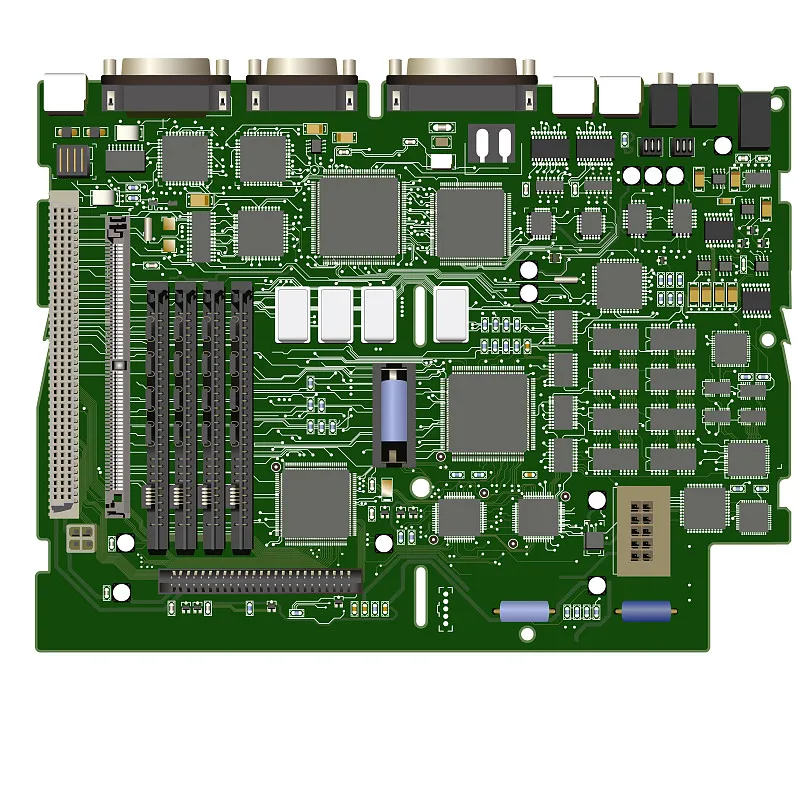* On your first PCB Assembly order!
* Up to $300 discount
 C - A L L E Y
C - A L L E Y 
Home | Events | PCBA | About Us | News | Contact Us
Due to the continuous miniaturization of PCB boards in electronic products, chip components have appeared, and traditional soldering methods can no longer meet the needs. Initially, only the reflow soldering process was used in the assembly of hybrid integrated circuit boards, and most of the components to be assembled and soldered were chip capacitors, chip inductors, mounted transistors, and diodes. With the development of the entire SMT technology becoming more and more perfect, and the emergence of a variety of chip components (SMC) and mount devices (SMD), the reflow soldering process technology and equipment as part of the mounting technology has also been developed accordingly, and its application is becoming more and more extensive. Almost all electronic products have been applied.
SMT placement machine is the equipment used in the pre-reflow soldering process, that is to say, the same SMT production line, the placement machine process is before reflow soldering, but it will not be used in wave soldering.
Simply put, the placement machine and reflow soldering are the necessary processes for SMT production. The placement machine is responsible for mounting components. Reflow soldering is to solder the mounted PCB board. It is configured in the dispenser or wire After the screen printer, it is a device that accurately places surface mount components on PCB pads by moving the placement head.

SMT Placement Machine And Reflow Soldering
SMT placement machine boot process:
1. Turn on the machine according to the equipment safety technical operating regulations.
2. Check whether the air pressure of the placement machine meets the equipment requirements, generally about 5 kg/cm2.
3. Turn on the servo.
4. Return all axes of the placement machine to the source point.
5. According to the width of the PCB, adjust the width of the guide rail of the placement machine FT1000A36. The width of the guide rail should be greater than the width of the PCB by about 1mm, and ensure that the PCB slides freely on the guide rail.
6. Set up and install the PCB positioning device:
- Set the PCB positioning method according to the operating rules. Generally, there are two methods: pin positioning and edge positioning.
- When using pin positioning, install and adjust the position of the positioning pin according to the position of the PCB positioning hole. Make the positioning pin exactly in the middle of the positioning hole of the PCB to make the PCB move up and down freely.
- If edge positioning is used, the position of the stopper and the top block must be adjusted according to the outline size of the PCB.
7. Place the PCB support thimble according to the PCB thickness and external dimensions to ensure that the force on the PCB is even and not loose during patching. If it is a double-sided mounting PCB, after the B (first) side is mounted, the position of the PCB support thimble must be re-adjusted to ensure that when the A (second) side is mounted, the PCB support thimble should avoid the already mounted side B. Installed components.
8. After the setting is completed, the PCB can be installed for online programming or patch operation.
SMD components are not convenient for manual placement due to their small size. The SMT placement machine uses special glue to place and paste the placement components on the PCB accurately and correctly. Afterward, reflow soldering is performed. Reflow soldering: The reflow soldering machine heats air or nitrogen to a high enough temperature and blows it to the circuit board where the components are already attached so that the solder on both sides of the component is melted and then bonded to the motherboard. Finish welding after cooling. Used for SMD components.
Wave soldering is to make the soldering surface of the plug-in board directly contact the high-temperature liquid tin to achieve the purpose of soldering. The high-temperature liquid tin maintains a slope, and a special device makes the liquid tin form a wave-like phenomenon. The pins of the plug-in are welded through "waves". Used for welding plug-in components, which are usually placed manually.
Reflow soldering
All of these put forward new requirements for the reflow soldering process. A general trend is to require reflow soldering to adopt more advanced heat transfer methods to achieve energy saving, uniform temperature, and suitable for double-sided PCB boards and soldering requirements of new device packaging methods. And gradually realize the comprehensive replacement of wave soldering. Generally speaking, the reflow oven is developing in the direction of high efficiency, multi-function, and intelligence. There are mainly the following development paths. In these development areas, reflow soldering leads the development direction of future electronic products.
Why Choose China PCBA Supplier KSPCBA as Your SMT Placement Machine And Reflow Soldering Manufacturer?
– Experienced and skilled team
– State-of-the-art equipment
– Strict quality control
– Excellent customer service
– Competitive price

Please send Email to kspcba@c-alley.com or call us through +86 13828766801 Or submit your inquiry by online form. Please fill out below form and attach your manufacturing files( PCB Gerber files and BOM List) if need quotation. We will contact you shortly.
 +86 13828766801
+86 13828766801 kspcba@c-alley.com
kspcba@c-alley.com https://www.kingshengpcba.com/
https://www.kingshengpcba.com/ 2/F, Building 6, Tangtou 3rd Industrial Zone, Tangtou Community, Shiyan Town, Baoan District, Shenzhen, China, 518108
2/F, Building 6, Tangtou 3rd Industrial Zone, Tangtou Community, Shiyan Town, Baoan District, Shenzhen, China, 518108